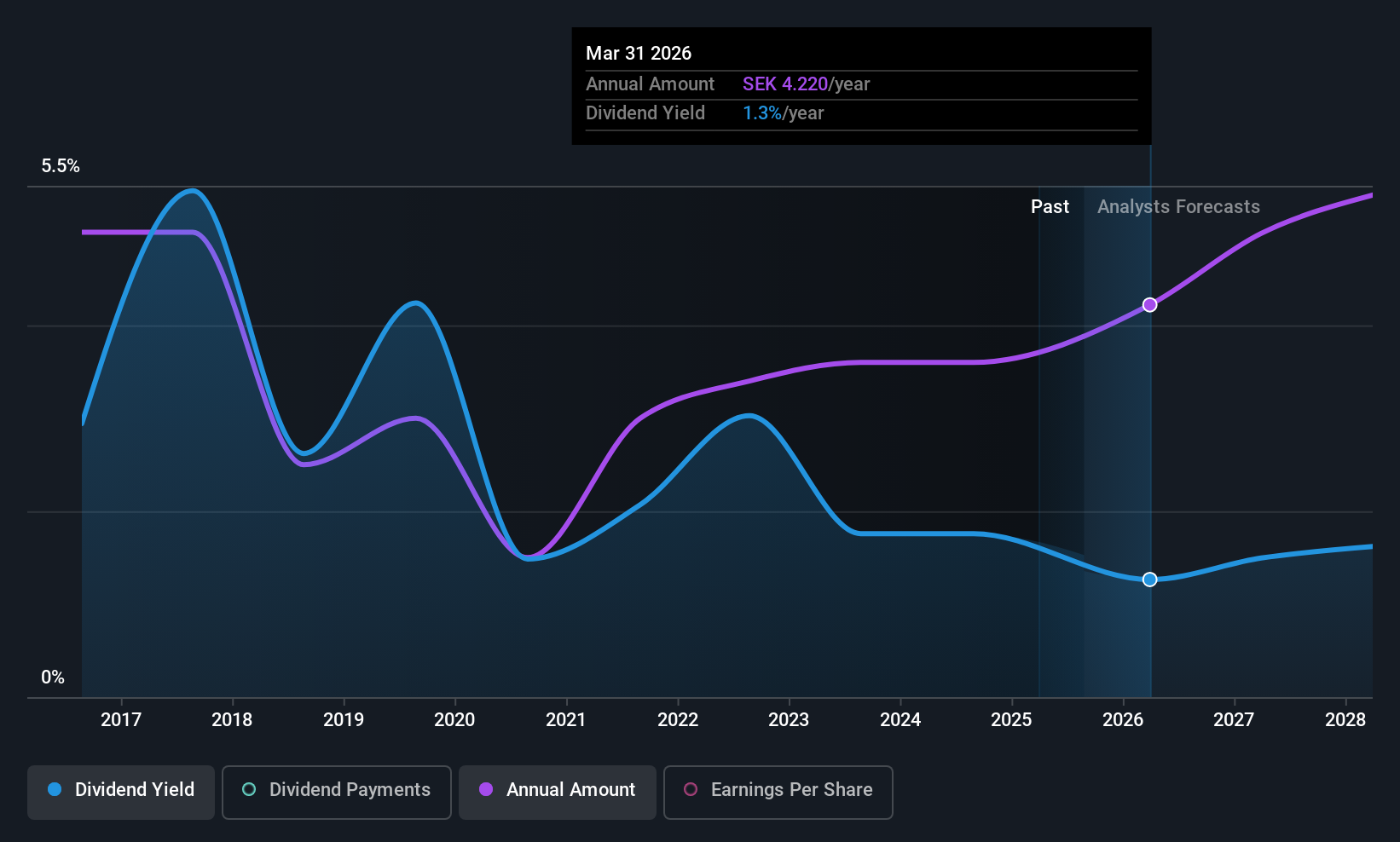- Sweden
- /
- Trade Distributors
- /
- OM:BERG B
Bergman & Beving (STO:BERG B) Is Paying Out A Larger Dividend Than Last Year
Bergman & Beving AB (publ)'s (STO:BERG B) dividend will be increasing from last year's payment of the same period to SEK4.00 on 4th of September. This makes the dividend yield about the same as the industry average at 1.2%.
Bergman & Beving's Projections Indicate Future Payments May Be Unsustainable
Estimates Indicate Bergman & Beving's Could Struggle to Maintain Dividend Payments In The Future
Bergman & Beving's Future Dividends May Potentially Be At Risk
Unless the payments are sustainable, the dividend yield doesn't mean too much. While Bergman & Beving is not profitable, it is paying out less than 75% of its free cash flow, which means that there is plenty left over for reinvestment into the business. In general, cash flows are more important than the more traditional measures of profit so we feel pretty comfortable with the dividend at this level.
Earnings per share is forecast to rise exponentially over the next year. Assuming the dividend continues along recent trends, we could see the payout ratio reach 120%, which is on the unsustainable side.

Check out our latest analysis for Bergman & Beving
Dividend Volatility
While the company has been paying a dividend for a long time, it has cut the dividend at least once in the last 10 years. The last annual payment of SEK4.00 was flat on the annual payment from10 years ago. The dividend has seen some fluctuations in the past, so even though the dividend was raised this year, we should remember that it has been cut in the past.
Dividend Growth May Be Hard To Come By
Growing earnings per share could be a mitigating factor when considering the past fluctuations in the dividend. In the last five years, Bergman & Beving's earnings per share has shrunk at approximately 7.2% per annum. If earnings continue declining, the company may have to make the difficult choice of reducing the dividend or even stopping it completely - the opposite of dividend growth. It's not all bad news though, as the earnings are predicted to rise over the next 12 months - we would just be a bit cautious until this can turn into a longer term trend.
Bergman & Beving's Dividend Doesn't Look Sustainable
Overall, we always like to see the dividend being raised, but we don't think Bergman & Beving will make a great income stock. The payments haven't been particularly stable and we don't see huge growth potential, but with the dividend well covered by cash flows it could prove to be reliable over the short term. We would probably look elsewhere for an income investment.
Companies possessing a stable dividend policy will likely enjoy greater investor interest than those suffering from a more inconsistent approach. At the same time, there are other factors our readers should be conscious of before pouring capital into a stock. Just as an example, we've come across 2 warning signs for Bergman & Beving you should be aware of, and 1 of them makes us a bit uncomfortable. Looking for more high-yielding dividend ideas? Try our collection of strong dividend payers.
Valuation is complex, but we're here to simplify it.
Discover if Bergman & Beving might be undervalued or overvalued with our detailed analysis, featuring fair value estimates, potential risks, dividends, insider trades, and its financial condition.
Access Free AnalysisHave feedback on this article? Concerned about the content? Get in touch with us directly. Alternatively, email editorial-team (at) simplywallst.com.
This article by Simply Wall St is general in nature. We provide commentary based on historical data and analyst forecasts only using an unbiased methodology and our articles are not intended to be financial advice. It does not constitute a recommendation to buy or sell any stock, and does not take account of your objectives, or your financial situation. We aim to bring you long-term focused analysis driven by fundamental data. Note that our analysis may not factor in the latest price-sensitive company announcements or qualitative material. Simply Wall St has no position in any stocks mentioned.
About OM:BERG B
Bergman & Beving
Provides solutions for the manufacturing and construction sectors in Sweden, Norway, Finland, and internationally.
Moderate growth potential and slightly overvalued.
Similar Companies
Market Insights
Community Narratives



